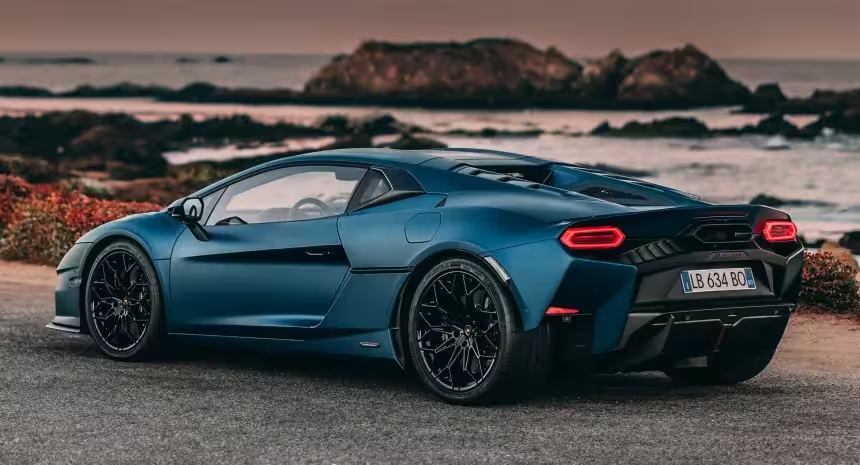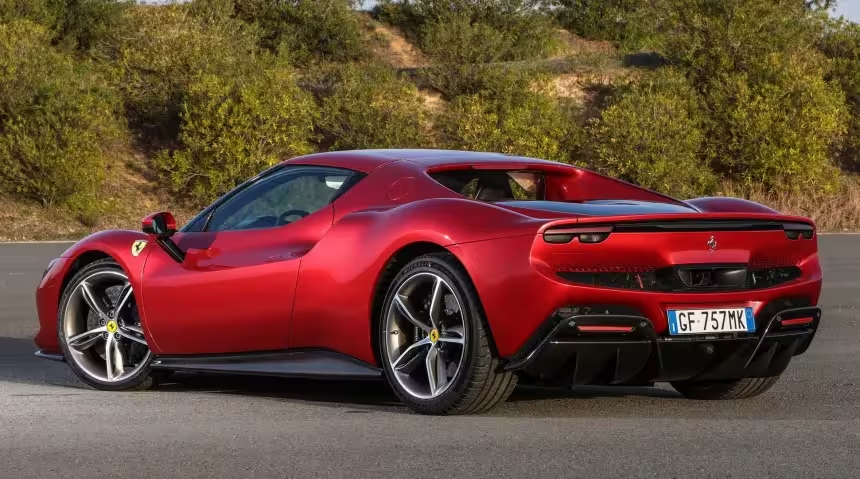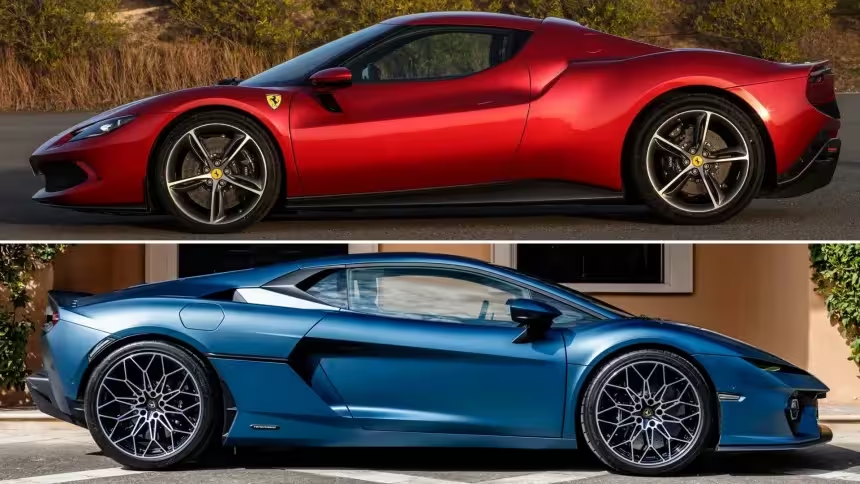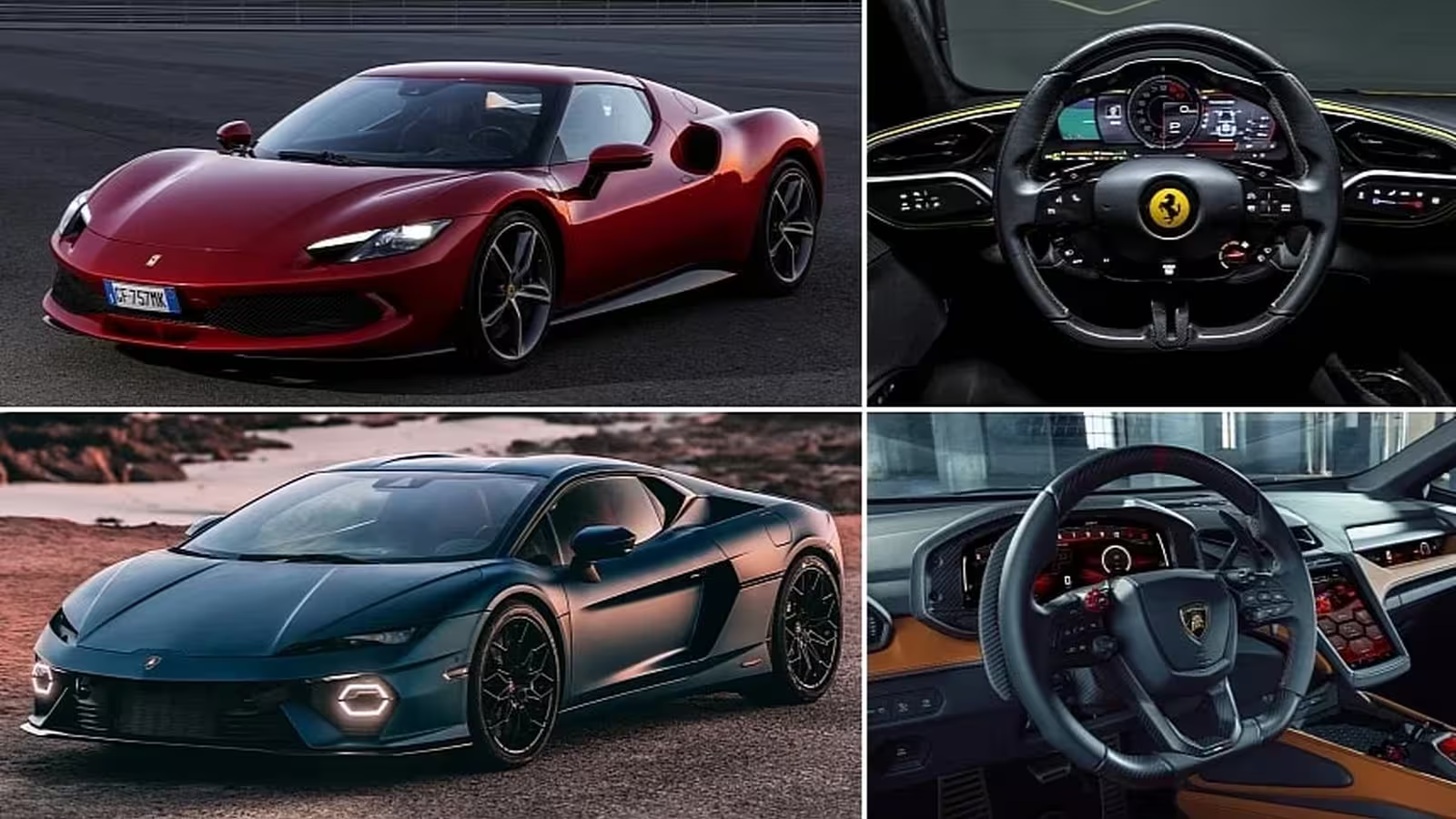6 Minutes
Introduction: The Evolving Face of Italian Supercars
For decades, Ferrari and Lamborghini have captivated car enthusiasts with their breathtaking designs and uncompromising performance. However, as the automotive world evolves, many fans are questioning whether the latest entries from these iconic brands—the Ferrari 296 GTB and the Lamborghini Temerario—live up to the heritage and visual drama their predecessors were known for. While both cars boast dazzling speed and advanced technology, their styling choices hint at a significant shift within the segment of Italian exotics.
Performance and Specifications: Power Redefined
Ferrari 296 GTB: A Hybrid Powerhouse
The Ferrari 296 GTB is a technical tour de force, ushering in a new era for the prancing horse with its innovative hybrid drivetrain. Under the hood lies a 3.0-liter twin-turbocharged V6, augmented by an electric motor and paired with an eight-speed dual-clutch transmission. Together, they generate an astonishing 819 horsepower (830 PS) and 546 lb-ft of torque.
This potent package rockets the 296 GTB from 0 to 60 mph in just 2.4 seconds—an incredible feat for a rear-wheel-drive supercar. Its top speed is equally impressive, maxing out at 205 mph (330 km/h).
Lamborghini Temerario: Electrified Thrills
Lamborghini’s all-new Temerario takes hybrid technology to the next level. Replacing the beloved Huracán, the Temerario features a 4.0-liter twin-turbo flat-plane V8 paired with three electric motors. Its total output surges to 907 horsepower (920 PS), distributed to all four wheels via an advanced version of the Revuelto's 8-speed dual-clutch gearbox.
On paper, the Temerario edges out the Ferrari with a higher top speed of 213 mph (343 km/h). Despite its added weight from the hybrid system, its sprint from 0 to 60 mph is expected to closely match the Ferrari’s, putting both vehicles near the pinnacle of modern supercar acceleration.

Design Analysis: Where’s the Italian Flair?
The Temerario: A New Generation or Just Familiar?
Successor to the sharply-styled Huracán, the Lamborghini Temerario arrives with muscular haunches and aggressive lines. Yet, despite its athletic presence, there is something subdued—and almost generic—about its appearance. While the Huracán and even the earlier Gallardo exuded an unmistakable, visceral aggression, the Temerario’s design feels more like a digital rendering meant for a video game than a genuinely bold automotive statement. It checks all the boxes, but lacks that electrifying originality that made Lamborghinis the poster cars of generations past.
Ferrari 296 GTB: Elegant but Uninspired?
The 296 GTB sports a clean, streamlined silhouette that demonstrates Ferrari’s mastery of aerodynamics and aesthetics. However, unlike the 458 Italia, 488, or F8 Tributo, whose shapes conveyed a blend of grace and aggression, the 296 feels almost restrained. While it is undeniably sophisticated, it lacks that daring, emotional spark that once set Ferraris apart even at a glance. Without its iconic badge, one might mistake the 296 GTB for an up-and-coming hypercar or even a new Rimac, rather than a Ferrari with decades of design legacy.

Comparisons: Rivals and Heritage
Lamborghini and Ferrari find themselves in a fiercely competitive segment, with competitors like the McLaren 750S and the Corvette ZR1 constantly raising the bar—especially in terms of radical design and driving excitement. The ZR1 offers a wild, unrestrained visual persona, while McLaren’s latest models are universally praised for their distinctiveness and beauty. Even Porsche continues to evolve the iconic 911 series, blending tradition with refined modernity.
Both the 296 GTB and Temerario, by comparison, seem to have opted for subtlety over shock factor. Fans who remember the jaw-dropping debut of a Lamborghini or Ferrari—be it the 430, Gallardo, or the earlier mid-engine V8 Ferraris—may find the new arrivals just a bit too safe, missing that crucial sense of aesthetic dominance.
Performance Versus Personality: The Balance Shifts
Neither the Ferrari 296 GTB nor the Lamborghini Temerario can be criticized for lack of speed, technology, or engineering brilliance. Both cars reaffirm what Italian supercars do best: deliver spine-tingling acceleration and exhilarating top speeds. Yet, it’s in their exterior designs where these models fall short—trading in the visceral form language their badges are known for in favor of a more restrained, mainstream approach.

Market Positioning and the Path Forward
Both models represent a significant evolution for their respective brands, signaling the increasing importance of electrification and hybrid powertrains in the supercar market. While the performance metrics remain world-class, the design strategies seem to be more about broadening appeal than pushing boundaries. This could be a strategic move by Ferrari and Lamborghini as they transition into the era of electrified exotic vehicles, aiming to attract newer, younger buyers and comply with stricter global emissions standards.
Conclusions: Transitioning to a New Era
Ultimately, while the Ferrari 296 GTB and Lamborghini Temerario showcase remarkable advancements in speed, hybrid technology, and luxury, their lack of distinctive styling may leave some longtime enthusiasts wanting more. These models might simply represent an interim step as Italian supercar manufacturers prepare for even more radical and expressive designs in the near future. Given the proven ability of both Ferrari and Lamborghini to reinvent themselves time and again, fans can remain hopeful that the next round of Italian exotics will bring back the boldness and excitement the segment is celebrated for.
The automotive world will watch closely as the brands recalibrate their designs—searching for the next revolution that will once again set pulses racing and cement their place in supercar history.
Source: autoevolution


Leave a Comment